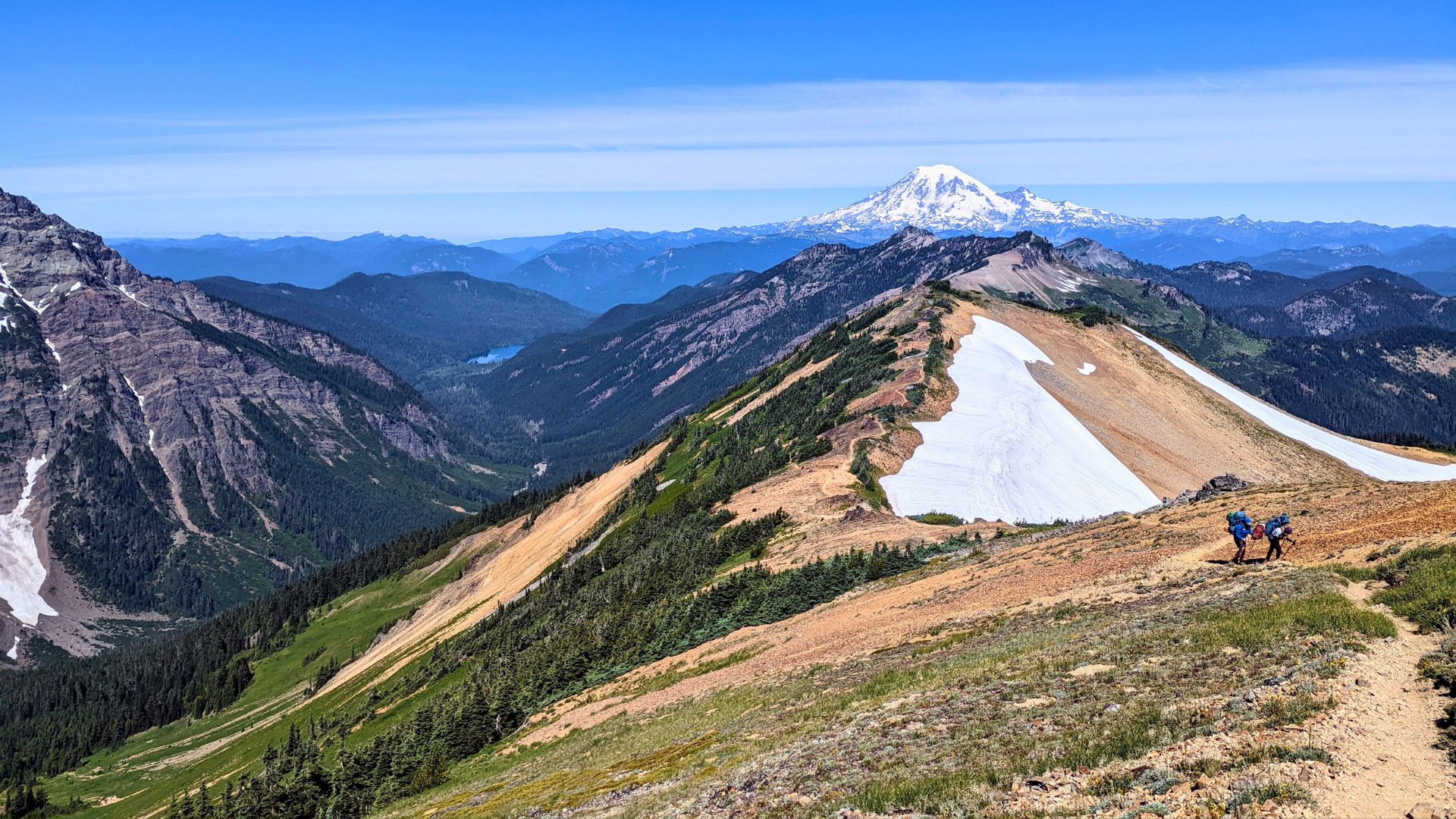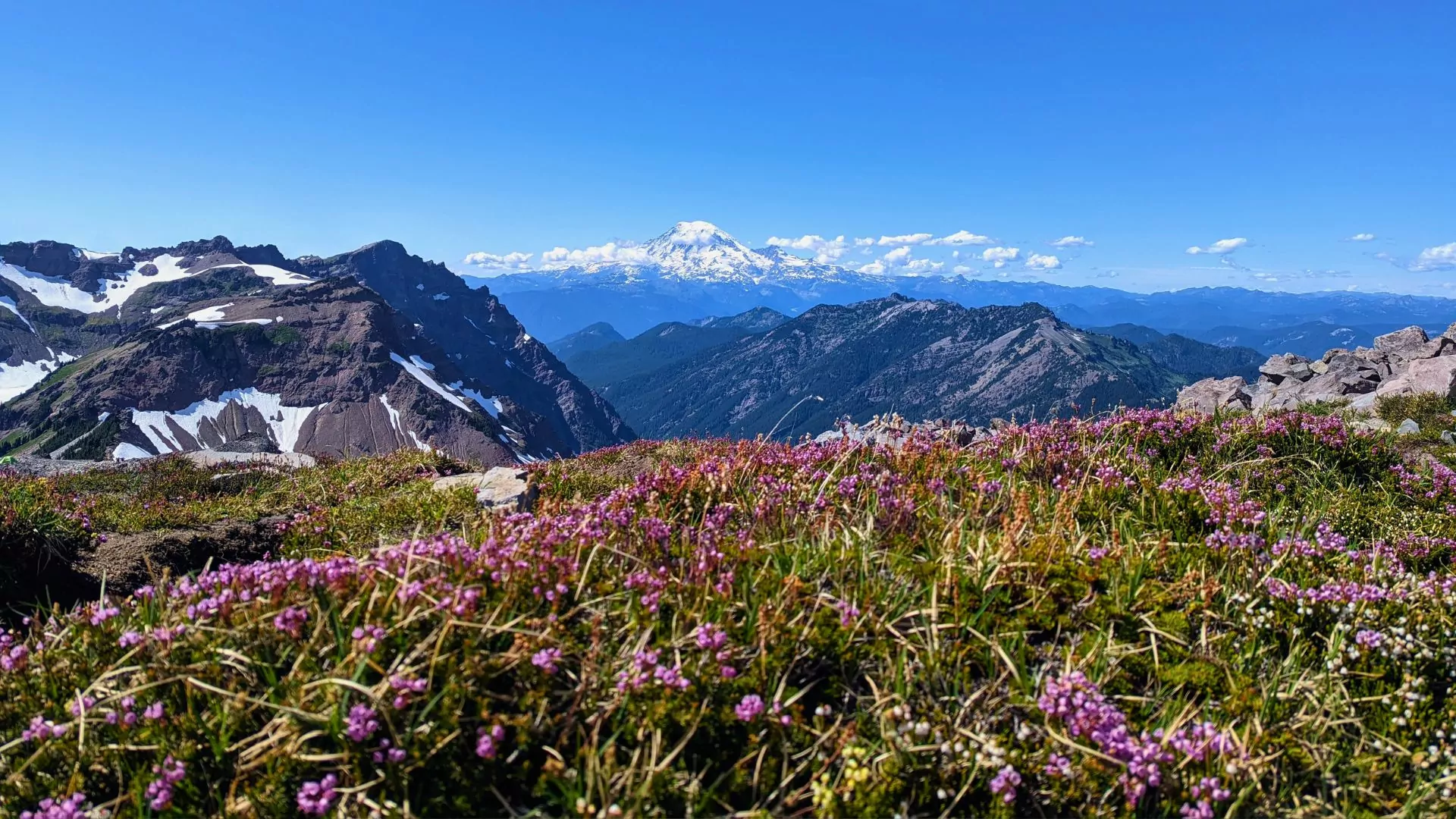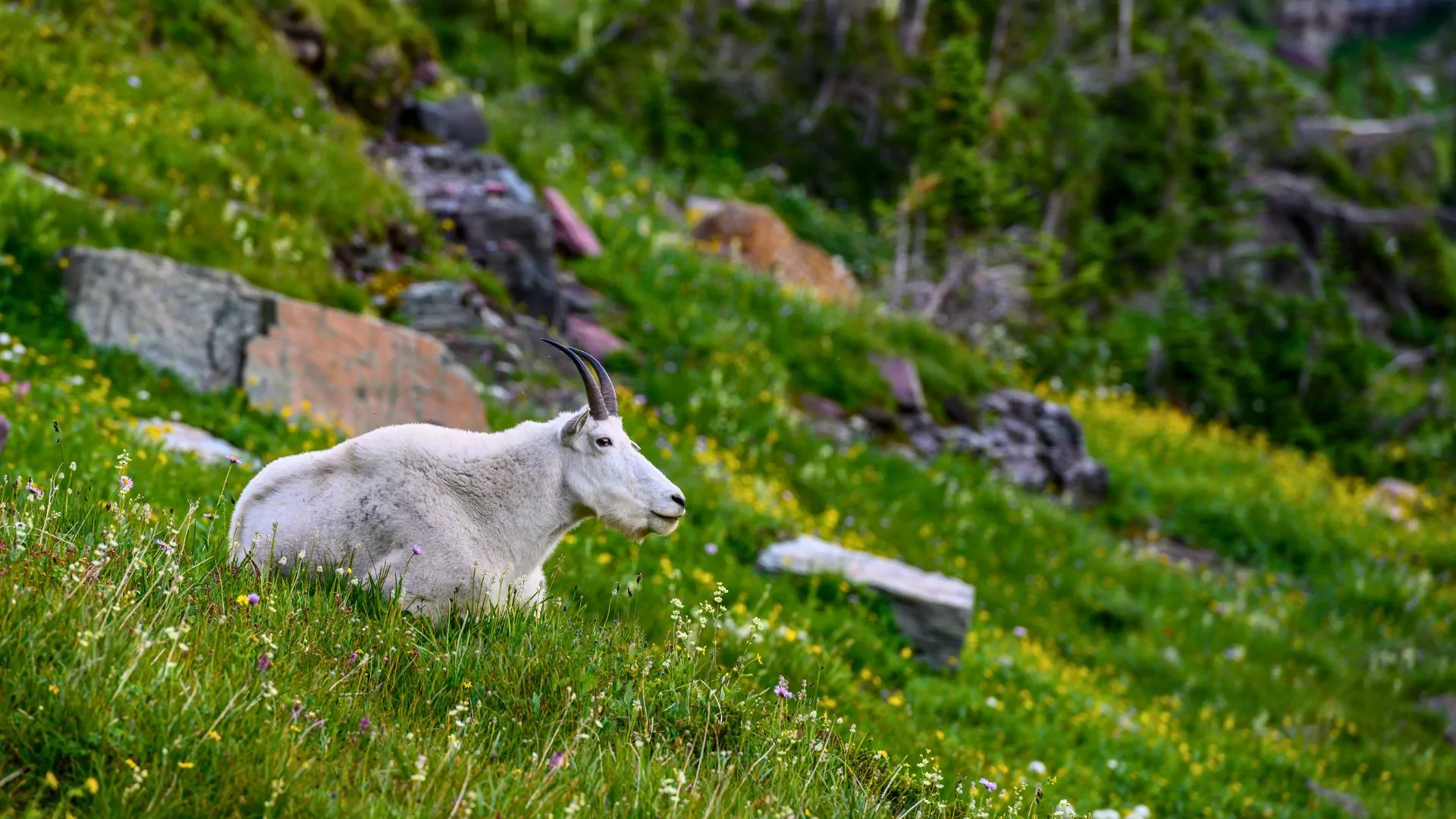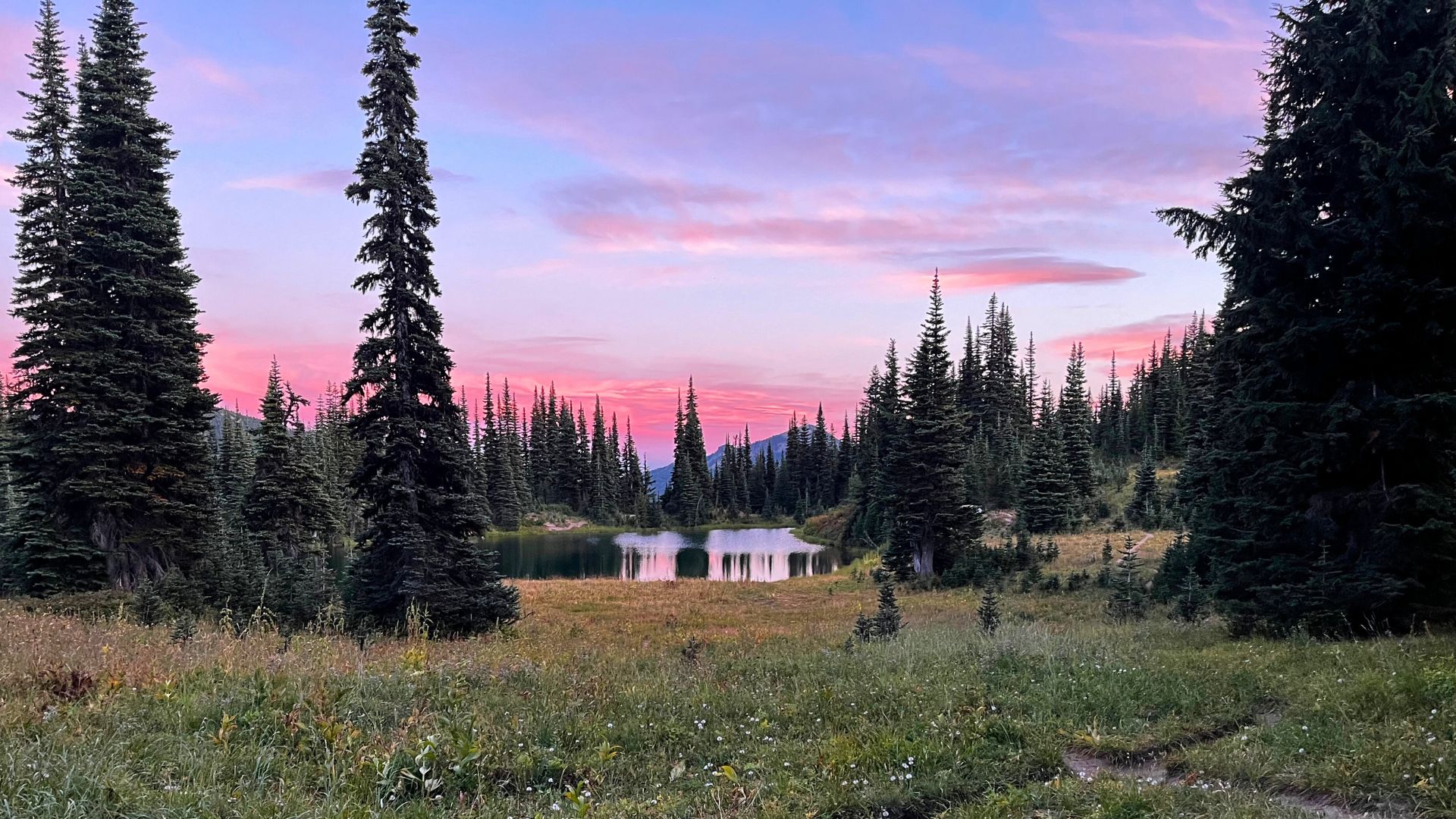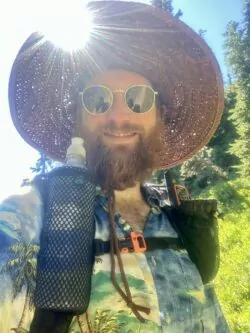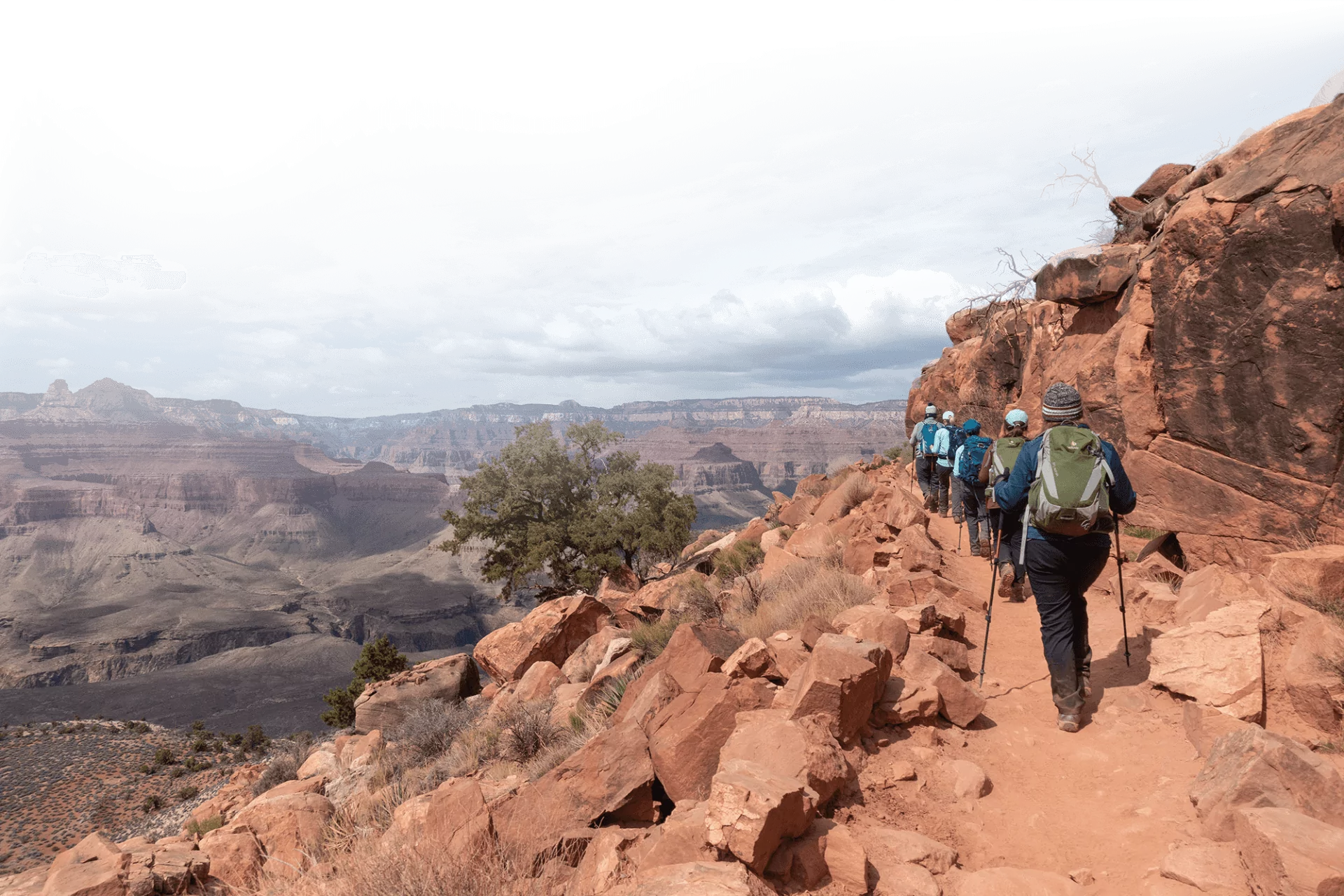This is the Most Scenic Wilderness in Washington State

Washington’s Goat Rocks Wilderness is a prime location to experience pristine outdoor spaces and some of the best scenery in the state. Roughly 2.5 hours southeast of Seattle or northeast of Portland, the Goat Rocks are nestled between three iconic volcanoes—Mt. Adams, Mt. Saint Helens and Mt. Rainier. In addition to expansive views of the Cascade Mountain Range, the Goat Rocks region also contains two large national forests, Gifford Pinochet and Okanagan-Wenatchee, as well as the popular Knife’s Edge section of the Pacific Coast Trail.
Knife Ridge Traverse Backpacking Trip
What to do in the Goat Rocks
The Goat Rocks Wilderness offers countless adventures into remote valleys, dense forests, and craggy mountain tops. In the forest along the shores of the glacier-fed Cowlitz river, you’ll find the quaint mountain community of Packwood, an old logging and mining town. Once a refuge for crooks and outlaws laying low and looking tofind work, Packwood is now an idyllic gateway town for nearby attractions like the White Pass Ski Area.
Beyond the town of Packwood, there are many other hikes and outdoor destinations to seek out in the Goat Rocks. Packwood Lake is a straightforward 5-mile hike with mostly mellow terrain. You can camp along the bank or in the forest with plenty of campsites, and a ranger station nearby. Dogs are also allowed, so on weekends expect to see many families and their furry friends camping out here. It’s a wonderful hike for an intro into backpacking, and in fact, was the first backpacking trip I took with my wife.
Walupt Lake is another ideal spot to check out. Drive right up to a lakeshore and unpack your kayak or paddle board, then camp nearby along the forest roads. With such easy access it can get a little crowded, but there’s a lot of lake to spread out on.
The Pacific Crest Trail runs right through the heart of the Goat Rocks, another notable feature of this beautiful area. While thru-hiking the PCT in 2022 I hiked along the Knife’s Edge section and was absolutely blown away. The PCT is one long hike between mountains, so eventually I became desensitized to all the beauty. The Goat Rocks quickly reminded me how epic the Cascade Mountains truly are, and the Knife’s Edge stood out as one of the coolest places I’ve ever been.
When to Visit the Goat Rocks
The weather in the Goat Rocks varies depending on the season. The area sees a good amount of snow in winter months, which sometimes doesn’t completely melt off the trails until mid-summer, and the peaks are typically snow capped year round. Spring is usually a temperamental season and can be very unpredictable. Early spring is a good pick if you are looking to bust out your snowshoes and get away from the crowds, while late spring offers wildflowers and newly born baby deer.
Summer is the prime adventuring season for most of Western Washington including the Goat Rocks. When the skies are blue, the views are pretty much as good as it gets anywhere I’ve been. Flowers are in bloom, wildlife is abundant, and temperatures are moderate. Just right to make you want to jump into that crystal clear lake. On a clear night when you’re out there away from all the city lights, you can see the milky way clearly while you’re cozying up next to your campfire on the shore of a glacier fed lake.
The weather usually starts to turn cold and can become rainy by late September and almost always before the end of October. Unless you’re hardcore and a little crazy, I wouldn’t recommend the Goat Rocks in the Fall. Because the PCT passes through the Goat Rocks, some areas become a little crowded for certain weeks of the summer. But PCT hikers pretty much exclusively camp along the trail, so if you want solitude, you just have to go over the next ridge or on the other side of that lake. It truly is a beautiful place.
Flora and Fauna of the Goat Rocks
You’re probably wondering, are there goats in the Goat Rocks? The answer is yes! The wilderness area is named after these bearded mountain lurkers. They do their best to remain hidden, but up in the alpine, you can usually spot mountain goats grazing somewhere in the landscape. Along with goats, it’s not unusual to spot a black bear off in the distance, cooling off in a lake or with their head stuffed into a huckleberry bush. Other common wildlife include marmots in the alpine meadows just above the treeline, or pika squeaking from the talus fields along the mountainside. If you’re lucky you might also spot elk, deer, squirrels, raccoons, eagles, or falcons.
Since the area gets so much rain, there is an incredible amount of diverse flora in the Goat Rocks including an abundance of fungus and mushrooms, and an endless forest canopy of evergreens dominated by Douglas fir, hemlock, and red cedar. In the summer you can also find huckleberry, salmonberry and other wild berries as well as an abundance of alpine wildflowers above tree line.
The Goat Rocks wilderness is incredible. Growing up in Washington state, I spent many weekends each summer swimming in the lakes and traveling the trails there. In fact, some of my very first adventures in backpacking took place in the Goat Rocks. It’s accessible by road, making adventures easy to get to, but also offers plenty of opportunities to find places where it’s just you and the stars and the wildlife. Because the Goat Rocks aren’t a national park, the area offers more solitude and less tourists and traffic.
Alpine Lakes Adventure in the Goat Rocks
The rivers are cold, the lakes are clear, the forests are dense, the mountains are snowcapped, and the views are endless. So what are you waiting for?



